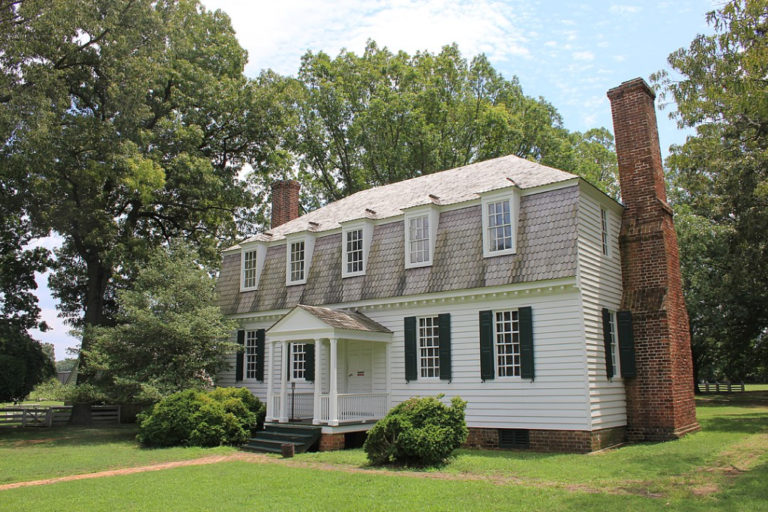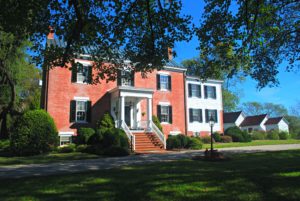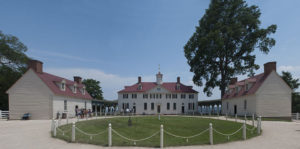Photo by: Navin75 / CC BY-SA 2.0 / Source: Wikipedia & Flickr
Virginia is home to some of the country’s most beautiful and historic farmhouses. These homes are unique in their architecture and offer a glimpse into America’s past.
If you’re interested in learning more about these charming homes, this blog post is for you! We will discuss the history of Virginia’s farmhouses and their unique architectural features. We’ll also provide some tips for preserving these historic homes.
The History of Virginia's Farmhouses

The history of Virginia’s farmhouses is long and storied, dating back to the early days of European settlement in the New World.
These early settlers brought a wealth of knowledge about agriculture and livestock farming, and they quickly put this knowledge to work in the Virginia colony.
The early farmhouses were typically modest structures, built of wood or crudely-hewn stone. They were often located on large tracts of land, which the settlers used for growing crops and raising livestock.
As the colony grew and prospered, the farmhouses began to reflect this wealth and prosperity. They became more extensive and more elaborate, with intricate detailing and stately columns.
Today, Virginia’s farmhouses are still some of the most beautiful and impressive structures in the state, indicative of the rich history and culture of the Commonwealth.
Virginia’s farmhouses are some of the oldest in the country. Many of these homes were built in the 1600s and 1700s, reflecting the architectural styles of that period.
The Architectural Styles of the Virginia Farmhouses
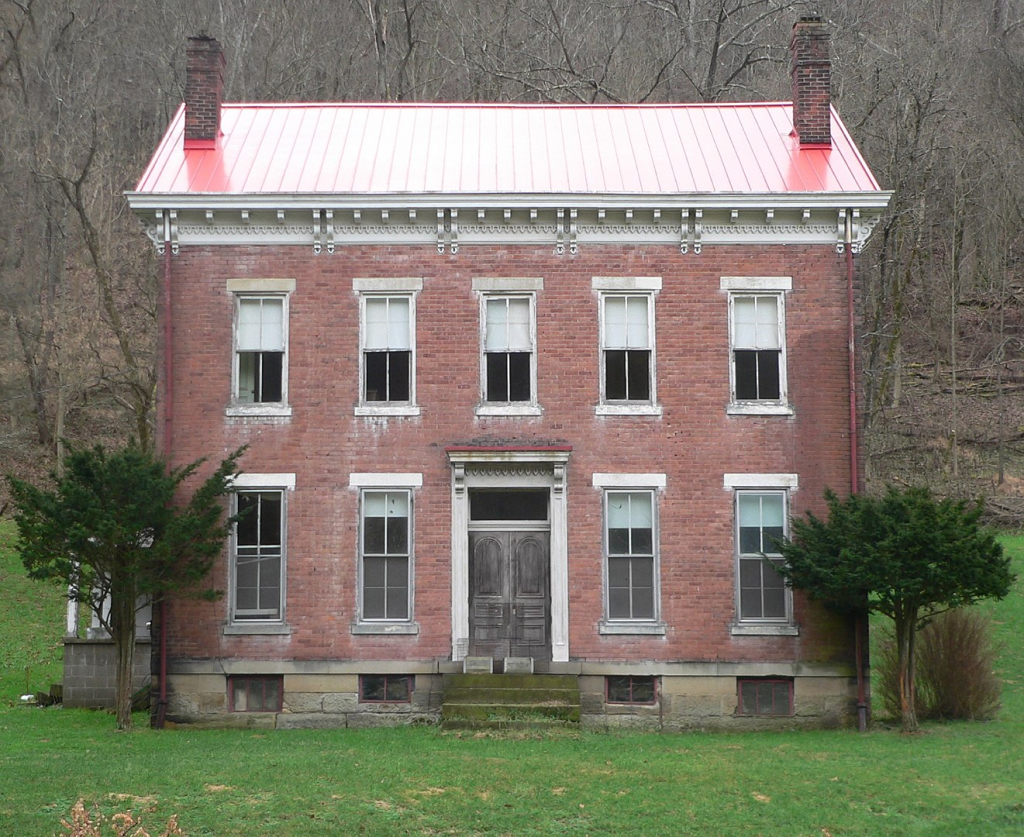
Photo by: Ammodramus / CC0 1.0 / Source: Wikipedia
One of the most distinctive features of Virginia’s farmhouses is their architecture. These homes were built in various styles, depending on the period and the region in which they were constructed.
The Colonial Style of Virginia's Farmhouse
The Colonial style of historic Virginia’s Farmhouse was popularized in the 18th century and is characterized by its simple, symmetrical design. The Farmhouse is a one-and-a-half-story dwelling with a central hall and two rooms on either side.
Dormer windows often pierce the gable roof, and the façade typically comprises brick or wood siding. Pairs of windows flank the front door, and the interior layout follows a traditional center-hall plan.
Although the Colonial style was not initially intended for rural farmhouses, it soon became associated with them due to its popularity in the American colonies.
The Georgian Style of Virginia's Farmhouses
Many of the farmhouses in Virginia were built in the Georgian style. This style was characterized by its symmetry and formal design elements. The main facade of a Georgian farmhouse would typically feature a central door flanked by two windows.
Above the door, there would often be a transom window or another decorative element. The roof would be gabled, and the chimneys would be on either side of the house.
Georgian farmhouses were usually built of brick or wood, and they often had porches or other features that added to their architectural interest. Many of these houses have been restored and are open to the public.
They provide a glimpse into the lives of early Virginia farmers and offer a beautiful example of 18th-century architecture.
The Federal-style of Virginia's Farmhouses
The Federal-style of architecture was popular in the United States during the late 18th and early 19th centuries. In Virginia, this style can be seen in many of the state’s oldest farmhouses.
These homes are characterized by their symmetrical design, simple lines, and rectangular shape. They often have porches with slender columns, and the windows are typically topped with decorative pediments.
While the exterior of these homes is fairly understated, the interior is often quite lavish, with intricate moldings and detailed fireplaces.
The Federal-style of architecture was adapted from British neoclassical designs, reflecting the new nation’s growing sense of independence and pride. Today, Virginia’s Farmhouses are a reminder of the state’s rich history and cultural heritage.
The Victorian Style of Virginia's Farmhouses
Virginia’s farmhouses are often characterized by their Victorian-style architecture. This style became popular in the late 19th century and features intricate details like turrets, bay windows, and wrap-around porches.
Many of Virginia’s farmhouses were built during this period, and as a result, they display these prominent features. However, each house is unique, and the Victorian style than others has more heavily influenced some.
Despite these differences, all of Virginia’s farmhouses have a certain charm and elegance that is undeniable. As you tour the countryside, look for these historic homes and admire their beautiful architectural details.
Many of Virginia’s farmhouses are still standing and listed on the National Register of Historic Places. The historic easement is also used to preserve and protect the historic properties of the houses.
These homes are a valuable part of our state’s history and offer a unique glimpse into the past.
Preserving Virginia's Historic Farmhouses

Since the 1600s, Virginia has been home to many farmhouses. These structures have a long and rich history and continue to play an essential role in the state’s economy and cultural heritage.
As a result, it is essential to take steps to preserve Virginia’s farmhouses. One way to protect these structures is by ensuring that they are well-maintained.
First, it is essential to have your home inspected by a qualified restoration contractor. They will be able to identify any areas of the house that need repair and offer advice on the best way to proceed with the restoration process.
In addition, you should keep up with routine maintenance tasks, such as painting and caulking, to prevent further damage.
This includes regularly inspecting the roof and foundations, as well as repairing any damage that is found. In addition, it is vital to repaint or re-stain the farmhouse’s exterior every few years.
This will help to protect the wood from rot and weathering. Another way to preserve Virginia’s farmhouses is by promoting them as tourist attractions. Many people are interested in learning about these structures’ history and are willing to pay to see them in person.
As a result, by opening up farmhouses to tourists, it is possible to generate income that can be used for preservation efforts.
Taking these steps makes it possible to ensure that Virginia’s farmhouses remain standing for many years to come.
Benefits of Owning a Virginia's Historic Farmhouses
There are many benefits to owning Virginia’s Historic Farmhouses.
- One benefit is that these homes offer a unique and charming living experience.
- They can be used as a source of income. By opening up your home to tourists, you can generate revenue that can be used for preservation efforts.
- By owning a Virginia Historic Farmhouse, you are helping to preserve the state’s history and cultural heritage.
If you are interested in owning a Virginia Historic Farmhouse, you should read the guide to buying a historic home in Virginia.
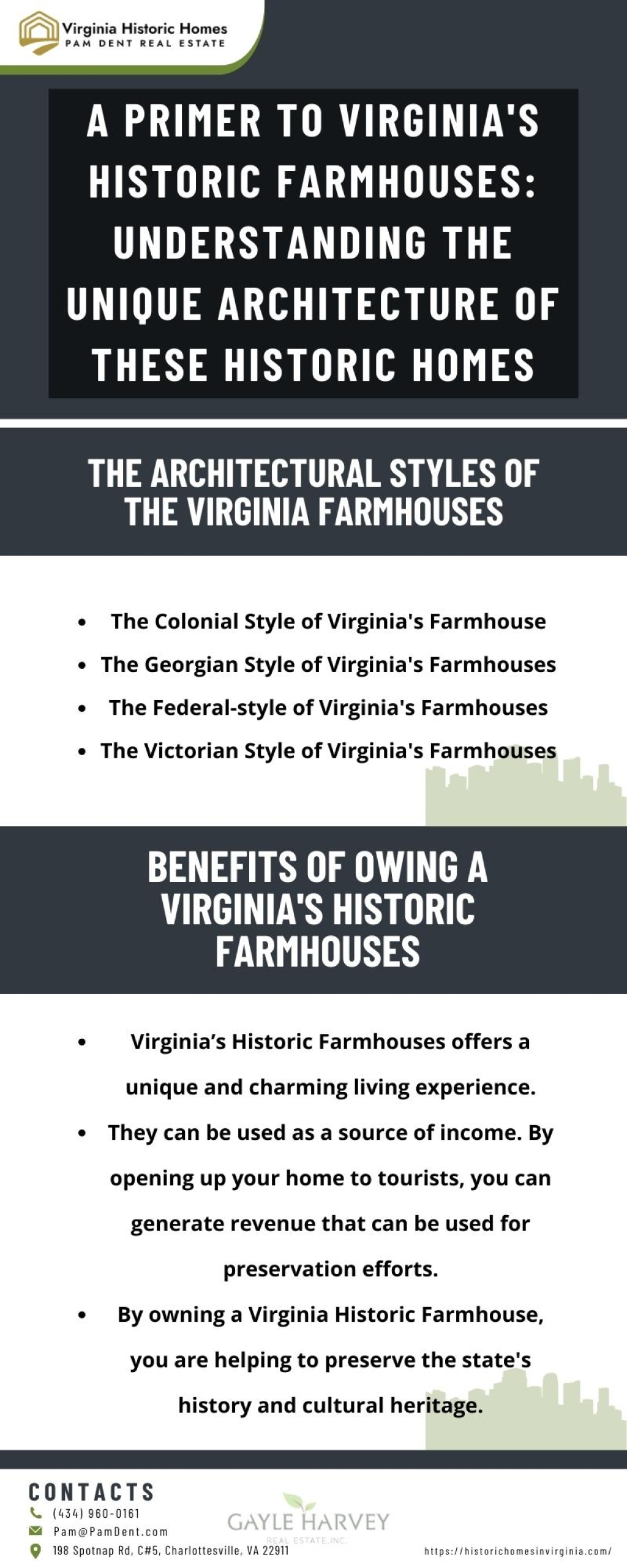
Final Thought
Virginia’s historic farmhouses are some of the country’s most beautiful and unique homes. With their stunning architecture and rich history, these homes are a must-see for anyone interested in American history or architecture.
If you’re planning to buy a historic home in Virginia, be sure to contact me. I’ll be glad to help you.
